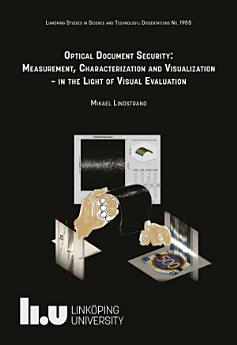Optical Document Security: Measurement, Characterization and Visualization: in the Light of Visual Evaluation
關於這本電子書
Optically variable device (OVD) is a concept in the industry, including costefficient and unique authentication functionality. OVD based features may serve as the main counterfeit mitigating functionality, as in banknotes. For higher value documents, such as passports, security architectural design may include multimodal (combined) features in which OVD is one characterizing and necessary aspect. Thereby a successful counterfeit need not only to simulate (“hack”) electronic based security features, such as radio frequency based identifier combined with public key infrastructure based cryptography (PKI) but also simulate OVD functionality. Combined feature authentication, based e.g. on PKI and OVD that relies on principally different physics and hence technology competences is of especial interest. Well-architectured and implemented, such multimodal counterfeit mitigating systems are effective to the degree that producing passable products requiring more resources than potentially illegitimately gained by the counterfeiter. Irrespective of level of ambition and efforts spent on counterfeit mitigation, OVD remains critically important as a security concept. One feature of OVD is the possibility to include a human inspector in the authentication procedure. Including such “man-in-the-loop” reduces the risk of successful and unnoticed simulations of algorithms, such as PKI. One challenge of OVD is a lack of standards or even measurements characterizing the significant aspects influencing a human based inspection.
This thesis introduces a system able to measure, characterize and visualize the significant aspects influencing a human based inspection of OVD features. The contribution includes the development of a multidimensional and high-dynamic range (HDR) color measurement system of spatial and angular resolution. The capturing of HDR images is particularly demanding for certain high contrast OVD features and require innovative algorithms to achieve the necessary high contrast sensitivity function of the imaging sensor.
Representing the significant aspects influencing a human based inspection of OVD requires a considerable amount of data. The development of an appropriate information protocol is therefore of importance, to facilitate further analysis, data processing and visualization. The information protocol transforming the measurement data into characterizing information is a second significant achievement of the presented work in this thesis.
To prove the applicability measurements, visualizations and statistically based analyses have been developed for a selection of previously unsolved problems, as defined by senior scientists and representatives of central banks. Characterization and measurements of the degree to which OVD deteriorate with circulation is one such problem. One particular benefit of the implemented suggested solution is the characterization and measurement aim at aspects influencing human based (“first line”) inspection. The principally difference in the problems treated indicates the generality of the system, which is a third significant project achievement.
The system developed achieves the accuracy and precision including a resolution, dynamic range and contrast sensitivity function required for a technology independent standard protocol of “optical document security” OVDs. These abilities facilitate the definition and verification of program of requirements for the development of new security documents. Adding also the capability of interlinking first, second and third line inspection based characterizations may prove a particular valuable combination, which is a fourth significant project achievement.
The information content (Entropy) of characterized OVDs and OVD production limitations in combination opens for OVD based novel applications of “physically unclonable functions” (PUF). This is of significance as it would generalize the established OVDs to facilitate multimodal verification, including PUF verification. The OVDs would thereby transform into a combined PUF first line inspection facilitating security feature.







